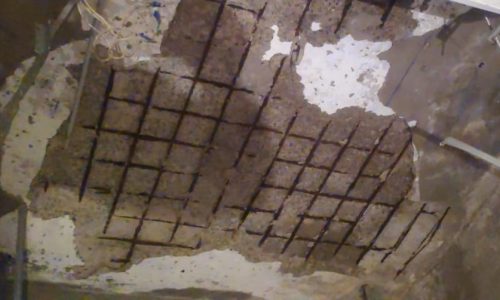Concreting is a critical process which requires strict supervision during placing and compaction of the concrete so as to achieve the desired strength and durability. The improper compaction and bonding between the concrete may leads to various defects which affects the strength and durability of the concrete structure.
Defects in concrete structures can result in failure of the structure under certain conditions. It is important for construction teams to observe these defects, such as cracking, spalling, blow holes, honey combing etc. to ensure that the structure being built out of concrete is capable of lasting its design life.
Most of the degradation processes encountered by concrete structures such as corrosion, alkali-aggregate reaction, sulphate attack and many other types of physical and chemical deterioration, require water dissolved chemicals. The process of chemical and physical deterioration of concrete with time or reduction in durability is generally dependent on the presence and transport of the deleterious substances through concrete. Thus, permeability of concrete has greater effect on durability of concrete.
There are many and different types of defects in concrete, but majority of defects are identified and illustrated as below:
- Blow holes
- Honey combing
- Cold joints
- Structural cracks
- Superficial cracks
- Concrete spalling.
Sometimes these are also called as bug-holes, they are individual rounded or irregular cavities that are formed against the formwork and become visible after the formwork is removed.

- Check moisture correction in concrete mix for aggregates are done properly and water is added as per concrete mix design
- Check for use of proper shuttering oil
- Introduce vibratory needle layer wise for effective removal of entrapped air in concrete
- After concreting use wooden mallet striking on formwork thoroughly to remove entrapped air
- Blow holes are not harmful but need to be avoided to get smooth finished surface.
It refers to voids caused by the concrete paste not filling the spaces between the coarse aggregate particles.

- Honey combing can be avoided by sealing formwork with foam to avoid slurry leakage
- Do not stop / delay concrete pouring at edges for long time viz. lower portion of structure where depths are more, and height of concrete discharge should not be more than 1m
- Maintain concrete slump as per mix design and do not add excess water to concrete mixes at site
- Introduce vibratory needle, layer wise for effective removal of entrapped air in concrete
- If defect persist, fine tune concrete mix design by reducing aggregate content in the mix. After fine tuning of the mix, such concrete mix designs should be validated before use in permanent work.
The cold joint in concrete is a crack or separation of layers that is found in hardened concrete due to improper intermixing and bonding between the two consecutive layers of the concrete. Cold joints in the concrete are one type of damage that is developed in concrete due to an improper concreting operation which may lead to the reduction in the strength and durability of the concrete.

- The concreting should be done in layers and intermix each layer properlywith the previous layer with the help of a needle vibrator
- While executing the concreting operations at high temperatures use retarding admixtures which increasesthe setting time of the concrete or add cold water/ice
- For the construction of the sloping structure the concreting should be started from the lower side and then moved towardsthe top.
Structural cracks are those that may occur due to faulty designs, overloading, heavy vibrations in case of shallow foundations, use of substandard construction materials, foundation placed on sandy and uncompacted soils, adoption of improper construction practices, poor workmanship etc.

- Proper design detailing viz. dead load, working load, wind load, sub-soil nature, environmental exposure conditions etc. should be considered at the time of designing the structure
- Avoid drying and plastic shrinkage of concrete during construction. This can be done by protecting fresh concrete layer against heavy wind, evaporation losses and dampening of concrete layer immediately after final setting of concrete
- Check properties of aggregates for aggregate-alkali reaction
- Use of sulphate resistance cement / partial replacement of cement with mineral admixtures such as fly ash or Ground Granulated Blast-Furnace Slag (GGBS) in concrete mixes where structure is exposed to marine condition
- Follow standard construction techniques and practices.
These cracks occur due to the internally induced stresses in concrete material or due to the temperature induced movement of the materials. These cracks are minor in their appearance and at times may give a feeling of instability.

- Curing process must be started as soon as the concrete finishing work has been completed
- Before pouring the concrete, the subgrade and the formwork must be dampened. Remove excess water
- If the temperature is not favorable, cold water / ice should be used in concrete mixes
- Between the finishing operations, surface shall be covered with a plastic sheet to avoid evaporation losses due to wind.

- Provide proper cover to reinforcement
- Crack should be sealed before it reaches the reinforcement bars
- Protect against corrosive chemical action by preventing from absorbing moisture, provide bituminous or zinc coatings to reinforcement and periodic painting
- Immediately repair the localized exposed area.
It can be stated with a degree of responsibility that modern day engineers are indeed respecting the need for building quality infrastructure that was seen in our older generations. However, we are yet to become accountable or demonstrate commitment if left unsupervised and thus the need for quality and focused supervision by qualified engineers continues to be a necessity. I leave it to the readers to infer their own views on this submission.